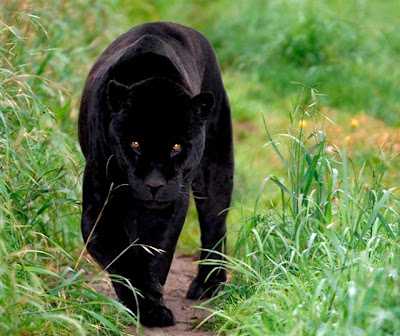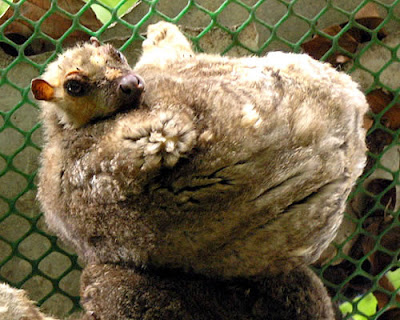The Life of Animals | Black Panther | The fur color is a mixture of blue, black, gray and purple. Melanistic leopards are the most common form of black panther in captivity and were retained for decades in the zoo of exotic animals and crafts. Blacks leopards are smaller and lighter than the normally pigmented individuals and built 'a myth that blacks leopards are often rejected by their mothers at an early age because of their color. According to Funk and Wagnalls Wildlife Encyclopedia captive leopards blacks are less fertile than normal leopards, with average size of waste 1.8 and 2.1, respectively. In early 1980, Glasgow Zoo acquired a 10 years black leopard, nicknamed the Cobweb Panther, from Dublin Zoo. This leopard had a uniformly black coat profusely sprinkled with white hairs as though draped with spider webs.
Consequently, blacks jaguars can produce black or spotted cubs, but a pair of spotted jaguar can only produce spotted cubs. The gene is completely dominant individuals with two copies of the allele are darker (the black background color is more dense) of individuals with one copy whose background color may appear dark charcoal rather than black. The black jaguar was considered a separate species by indigenous peoples. W H Hudson wrote The jaguar is a beautiful creature, the ground color of the hair of a rich golden-red tan, abundantly marked with blacks rings, enclosing one or two small spots inside. This is the typical color, and varies slightly in temperate regions, the hot region the Indians recognize three strongly marked varieties, which they regard as distinct species - the one described, the smaller jaguar, less aquatic in his habits and marked with spots , not rings, and, thirdly, the black variety. They explore the idea that their terrible "black tiger" is a mere melanic variation, like the black leopard of the Old World and the wild black rabbit. They regard it as entirely distinct, and affirm that it is larger and much more dangerous than the spotted jaguar, who recognized him by his cry, which belongs to the land rather than the water side, finally, that black pairs with black, and the cubs are invariably black.
A black jaguar named "Diablo" was inadvertently crossed with a lioness named "Lola" at the Bear Creek Wildlife Sanctuary in Barrie, Canada The children had a black female jaglion coal and a tan-colored, male jaglion spotted. It therefore seems that the jaguar melanism gene is also dominant color normal lion (the black jaguar sire was presumably carrying the black on one allele). In preserved, stuffed, blacks leopards often fade to a rusty color, but blacks jaguars fade to chocolate brown. There is wide consensus among breeders and biologists that the animal does not exist blacks cougars have been reported in Kentucky and Carolina. There were also reports of pumas shiny blacks from Kansas, Texas and eastern Nebraska These have come to be known as the "North American Black Panther". Black Panthers in the American system in south-east relief Choctaw folklore where, along with the owl, are often thought to symbolize death.
under The name of cougar black head is quite similar to that of the common cougar but the animal has long hair, blacks, and so a long tail, with strong whiskers He weighs not much above forty pounds The female gives birth its young in the hollows of old trees. 180 According to his translator Smellie (1781), the description was taken from two black cougars exhibited in London some years before.




















































